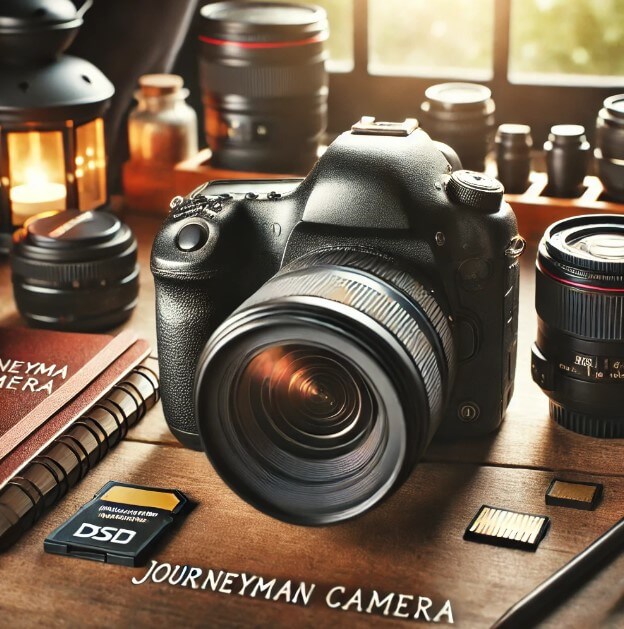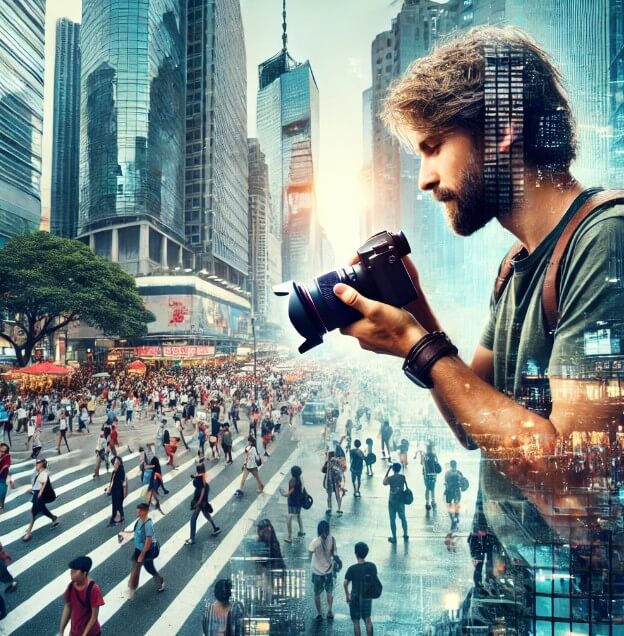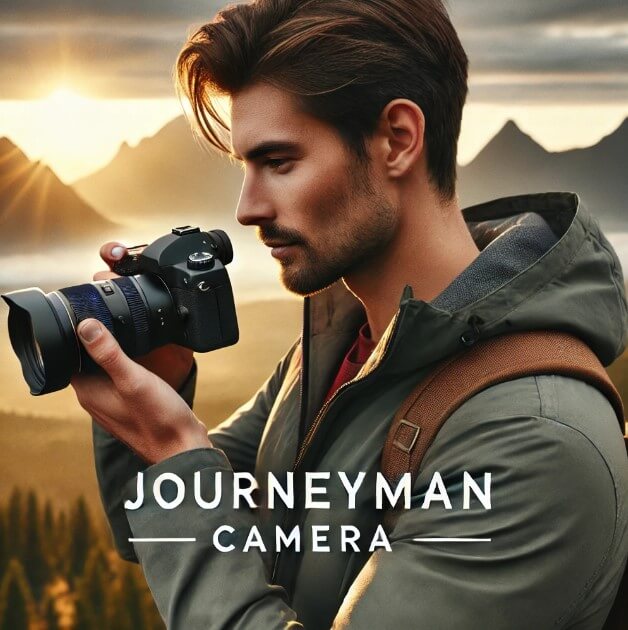Photography is an art form that demands continuous growth, learning, and the right tools. As photographers develop their skills, they often feel limited by entry-level cameras and find professional equipment intimidating or costly. This is where the Journeyman Camera comes into play. Designed to bridge the gap between beginner and professional photography gear, a journeyman camera is perfect for those who are serious about honing their craft but aren’t quite ready to make the leap into high-end professional models.
What is a Journeyman Camera?
A Journeyman Camera refers to a versatile and reliable camera built for intermediate-level photographers who want to expand their skills. It typically offers a blend of advanced manual features and automated settings, making it suitable for various photography styles, from landscapes to portraits and action shots. While it is more advanced than entry-level models, it is not as complex or expensive as professional cameras, providing a balanced experience.
Key Features of a Journeyman Camera

Understanding the features of a journeyman camera can help photographers make an informed decision when upgrading their equipment.
1. Versatility and Flexibility
Journeyman cameras are incredibly versatile, supporting multiple shooting modes and styles. Some of the shooting modes you can expect include:
- Full Manual Mode: Offers complete control over aperture, shutter speed, and ISO, perfect for photographers who want to experiment.
- Aperture Priority Mode (A/Av): Ideal for portrait and landscape shots where you control the aperture, and the camera automatically adjusts the shutter speed.
- Shutter Priority Mode (S/Tv): Best for action photography, allowing you to set the shutter speed while the camera adjusts the aperture.
- Program Mode (P): Offers semi-automatic settings for ease of use while still giving you some manual control.
2. Advanced Autofocus Systems
Journeyman cameras typically have advanced autofocus systems with features like:
- Multiple AF Points: Up to 51 or more autofocus points for accurate subject tracking.
- Face and Eye Detection: Essential for portrait photographers.
- Continuous Autofocus (AF-C): Useful for sports and wildlife photography.
3. High-Quality Image Sensors
These cameras are equipped with larger and more sophisticated sensors, usually ranging from 20 to 32 megapixels. The larger sensor size improves image quality, especially in low-light conditions, and provides greater detail and dynamic range.
4. Sturdy Build and Weather Sealing
Journeyman cameras often come with durable, weather-sealed bodies, making them suitable for outdoor and adventure photography. While they may not be as robust as professional DSLRs or mirrorless cameras, they can handle everyday wear and tear.
5. Ergonomics and Customization
- Comfortable Grip: A well-designed body ensures a good grip, even during long shoots.
- Customizable Buttons and Menus: Users can personalize camera functions to suit their workflow.
6. High-Speed Shooting and Video Capabilities
- Burst Modes: Most journeyman cameras offer continuous shooting speeds of 7-10 frames per second, ideal for action and sports photography.
- 4K Video Recording: With advancements in video technology, these cameras often support 4K video capture, along with features like slow motion and time-lapse recording.
7. Connectivity Options
Modern journeyman cameras are equipped with various connectivity features, such as:
- Wi-Fi and Bluetooth: For instant photo sharing and remote control.
- NFC (Near Field Communication): A quick and easy way to connect your camera to compatible devices.
- USB-C Ports: Faster data transfer and in-camera charging capabilities.
Journeyman Camera vs. Entry-Level and Professional Cameras

It’s important to understand how journeyman cameras compare to other categories. Here is a quick breakdown:
| Feature | Entry-Level Cameras | Journeyman Cameras | Professional Cameras |
|---|---|---|---|
| Target Audience | Beginners and hobbyists | Enthusiasts and semi-professionals | Professional photographers |
| Image Quality | Good, but limited in low-light | High, with advanced sensor technology | Exceptional, best-in-class quality |
| Build Quality | Lightweight, plastic construction | Durable, some weather sealing | Heavy-duty, weatherproof construction |
| Autofocus System | Basic | Advanced, with multiple AF points | Extremely fast and accurate |
| Manual Controls | Limited | Extensive, with easy customization | Complete control over settings |
| Video Capabilities | 1080p or basic 4K | 4K, with enhanced video features | 4K/8K, professional video settings |
| Price Range | $300 – $800 | $800 – $1,800 | $2,000 and up |
Why Choose a Journeyman Camera?
If you’re serious about improving your photography but not quite ready to invest in professional equipment, a journeyman camera is the perfect middle ground. Here’s why:
1. Learning Curve
These cameras strike a balance between ease of use and the ability to learn. You can switch between fully automatic settings and manual controls as you grow more confident.
2. Value for Money
While professional cameras can cost thousands of dollars, journeyman models offer many of the same features at a fraction of the cost. They provide an excellent return on investment for semi-professional work or hobby photography.
3. Adaptability
Whether you enjoy portrait, landscape, wildlife, or sports photography, a journeyman camera can adapt to your needs. With the ability to swap lenses and use various accessories, these cameras are highly adaptable to different environments and situations.
Popular Journeyman Cameras on the Market
Here are some widely recommended journeyman cameras that offer exceptional performance and features:
1. Canon EOS 90D
- Sensor: 32.5MP APS-C
- Autofocus: 45 cross-type AF points
- Video: 4K recording at 30fps
- Highlight: Excellent for action and sports photography, with a fast burst rate and robust build.
2. Nikon D7500
- Sensor: 20.9MP APS-C
- Autofocus: 51 AF points
- Video: 4K UHD recording
- Highlight: Best suited for landscape and wildlife photography with great low-light performance.
3. Sony Alpha a6400
- Sensor: 24.2MP APS-C
- Autofocus: 425 phase-detection points
- Video: 4K recording with HDR
- Highlight: A compact mirrorless camera ideal for travel and vlogging.
4. Fujifilm X-T4
- Sensor: 26.1MP APS-C
- Autofocus: 425 AF points
- Video: 4K at 60fps
- Highlight: Known for its film simulation modes and exceptional video quality.
Tips for Choosing the Right Journeyman Camera
When shopping for a journeyman camera, consider the following factors:
1. Determine Your Photography Style
Are you interested in action photography, landscapes, portraits, or video production? Knowing your preferred style will help narrow down your options.
2. Assess Your Budget
Journeyman cameras typically range from $800 to $1,800. Factor in the cost of lenses and accessories as well.
3. Prioritize Key Features
Focus on features that align with your photography goals, such as autofocus performance, burst shooting speed, and weather sealing.
4. Ergonomics and Handling
Visit a camera store and hold the models you’re considering. Make sure the camera feels comfortable and the controls are intuitive.
FAQs About Journeyman Camera
1. What makes a camera a “Journeyman Camera”?
A Journeyman Camera is designed for intermediate-level photographers. It features a blend of advanced settings and ease of use, making it ideal for those transitioning from beginner to more complex photography.
2. Is a journeyman camera worth the investment?
Yes, if you’re looking to expand your skills without the high cost and complexity of professional equipment. These cameras provide excellent value with features like manual control, high-resolution sensors, and durable builds.
3. Can I use a journeyman camera for professional work?
While they are not considered professional-grade, journeyman cameras can be used for certain types of paid photography, such as weddings or portraits, provided the conditions are favorable.
4. What are the best lenses to use with a journeyman camera?
It depends on your photography style. For portraits, a 50mm f/1.8 is great. For landscapes, a wide-angle lens is essential. For wildlife, consider a telephoto zoom lens.
5. How do I maintain my journeyman camera?
Regularly clean your camera and lenses, avoid exposing it to extreme conditions, and update the firmware to keep the camera functioning smoothly.
6. Are mirrorless journeyman cameras better than DSLRs?
Both have their advantages. Mirrorless cameras are typically lighter and have faster autofocus, while DSLRs often have longer battery life and a more traditional shooting experience.
By understanding the features and benefits of a Journeyman Camera, you can make an informed choice and take your photography to the next level. Whether you’re capturing breathtaking landscapes or fast-paced action, a journeyman camera equips you with the tools you need to excel.
Happy shooting!
Visit GLOBEYA for more!



